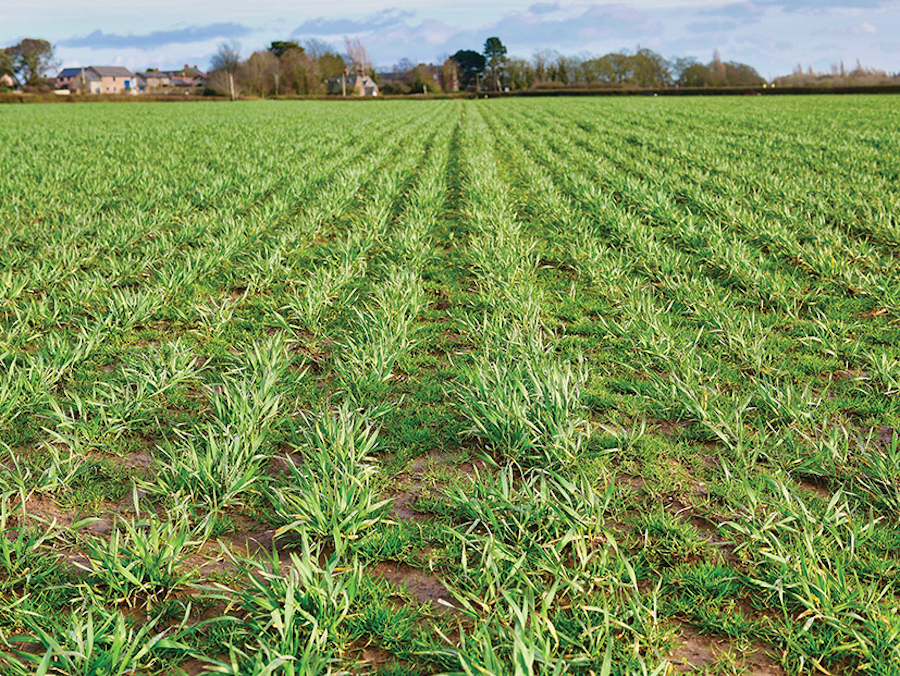Give your land a spring clean
18th November 2023
Following a relatively wet autumn, weeds could take advantage of wet soil and open canopies to cause problems this spring. Adam Hinchcliffe of Bayer shares his thoughts on how to approach weed control in 2024.

“Last season, grassweeds were a problem on many farms, wet ground made it hard to apply herbicides in spring and weeds tillered extensively producing many heads, increasing seed return,” explains Mr Hinchcliffe. “With this background of high seed return, good control is doubly important this spring to stop consecutive increases in the size of the seedbank.”
Check weed status
In winter wheat, make an accurate assessment of weed spectrum, resistance status and pre-em performance before deciding if a follow up herbicide is needed in spring. Even where pre-ems have performed well, there are always some survivors which can recover. Added to that, there are spring germinating weeds so a field that looks clean in January can have plenty of weeds a couple of months later.
“It’s easy to focus on resistance status, but population size is equally important when planning a post-em application. If the starting population is fairly small, then a post-em has a good chance of delivering useful control. With higher weed numbers, you have the situation where decent control in percentage terms, say 50–60%, means very little in practical terms because there are still far too many heads of black-grass, ryegrass or whatever the target is,” comments Mr Hinchcliffe.
“This is why we say the post-em is about finishing the programme. There needs to be a robust set of cultural and pre-em controls beforehand to set things up for success in the spring.”

Pick the product for the problem
Choosing the right product depends on weed spectrum and resistance status. Mr Hinchcliffe explains: “In general, if grassweeds are the main target, then Atlantis Star (mesosulfuron + iodosulfuron + thiencarbazone) is the best option. It is the only post-em herbicide with three grassweed actives and typically provides 5–10% more control than the next best products.”
But in some situations, with broadleaf weed pressure, Pacifica Plus (mesosulfuron + iodosulfuron + amidosulfuron) may be preferred. For ryegrass control, knowing the resistance status is important to choose between mesosulfuron-based products or pinoxaden. The 2021 NIAB/Bayer ryegrass survey showed that ryegrass does not have predictable resistance patterns and over half of populations in the survey were still susceptible to at least one type of post-em.
Timing and conditions essential for success
More than any other herbicide timing, the conditions at application have a huge bearing on overall performance of the post-em. As a rule, smaller black-grass and ryegrass plants are more susceptible so the aim should be to apply as soon as possible in the spring, but this means ground and weather conditions are more challenging.
“First of all, the field needs to be fit to travel. Next, active growth so that weeds take in the herbicide, ideally warming soil and air temperatures but in early spring we have seen plants are still active on a metabolic level on bright sunny day even if not actively growing new leaves. This means that we can see better efficacy from herbicides on colder days in February than when we wait till the end of March when the weeds are potentially growing into stem extension and are not so susceptible,” Mr Hinchcliffe shares.

On the day of application, weather conditions need to allow the spray to land, settle and dry on the leaf. This means no more than a gentle breeze and ideally a bright sunny day to get maximum efficacy. Having sufficient drying time is important which can limit work capacity so it is important to have a priority list of fields based on the weed burden and the growth stage of the weed rather than taking the queue from the growth stage of the crop which can often be behind the weeds. Another benefit of the Atlantis Star is the label permitting us to get a full 15g of Mesosulfuron from the beginning of February, which helps to increase weed control.
This spring, Bayer is launching a new decision support tool to help farms apply post-ems in optimal weather conditions. It will use local weather data to alert farmers when it is a good time to apply. More information about the tool will be made available early in the new year.
Spring crop preparation
Effective management of weedy stubbles ahead of drilling helps give spring crops a clean getaway. The main challenge is to get good kill of all weed species including perennials and over-wintered broad-leaf weeds which can require higher rates to get full control, review the rate table below for information about specific weeds
“Spraying-off stubbles might seem like a straightforward job, but it requires the same attention to detail as other spring herbicides. Once you have chosen the right rate for weed spectrum and development, application technique is all important. Trials in 2021 showed how applying with 0.5m boom height and using suitable nozzles prevents drift and improves weed control from glyphosate. Also, forward speeds of no more than 12kph help keep the boom stable for consistent application.”
In spring crops, competition is a key form of weed control so time drilling to coincide with rising soil temperatures so the crop can get up and away ahead of weeds (see Table).
